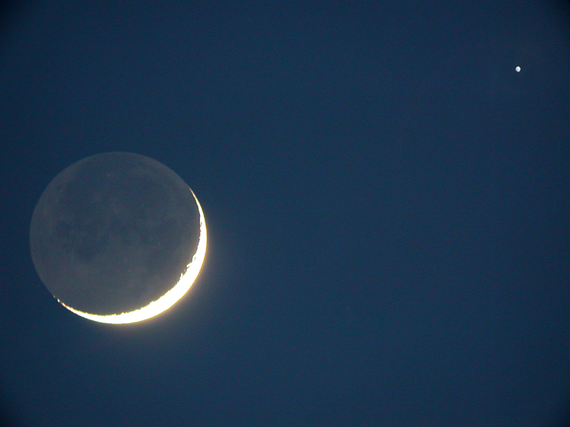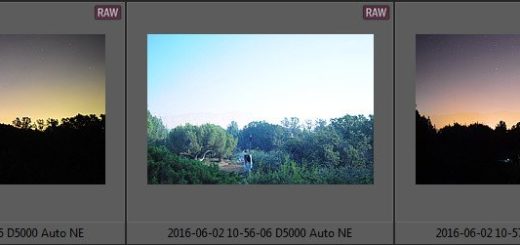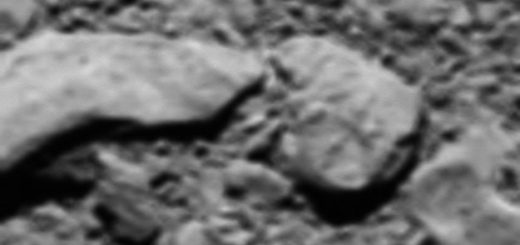Brightest Planets Meet on Tuesday
You’ve probably seen them in the evening: two suspiciously bright lights in the western sky. What are they? Planes? UFOs? No, they’re the two brightest planets and they’re heading for a dramatic conjunction Tuesday night.
Let’s go outside and watch some sunsets over the next week. Face west and as darkness falls there’s Venus, the brightest star-like object in the sky. “Wish I may, wish I might, first star I see tonight,” is actually a planet. Venus is so incredibly bright in our sky because it is a planet almost 8,000 miles across, is relatively close to us (about 55 million miles), and is covered in highly-reflective clouds that bounce the sunlight back to us. You may even be able to spy it before the Sun sets. As the Sun sets further and the sky darkens, the next ‘star’ that will pop into view is not a star either. That is Jupiter, 5th planet from the Sun and largest planet in the solar system. Jupiter is so bright because, even though it’s over 550 million miles away, it’s huge: 88,000 miles in diameter or over 11 Venuses wide. Plus Jupiter is mainly made of hydrogen and helium gases and its cloud-tops reflect a lot of sunlight.
Epic Conjunction Venus and Jupiter are heading for an epic planetary conjunction – when they will appear unbelievably close in the sky. On Saturday night they’ll be less than two degrees apart (that’s about the size of your pinkie finger held at arm’s length). Sunday night they’ll be about one degree apart. Monday they’ll appear even closer and then Tuesday night, June 30 will be closest approach. If you have good eyesight, you’ll be able to make out two distinctly bright lights in the sky. If your eyesight is less than perfect, like mine, the two planets may appear to merge into one brilliant blaze.
Through some telescopes you may be able to see both planets in one field of view. Venus presents a surprising shape in a telescope, looking like a hazy crescent. Jupiter sports stripes on the planet and four moons in perfect alignment.
After Tuesday night, the planets will separate as Jupiter heads behind the Sun and Venus swings around in front of the Sun. However, you’ll be able to see them in the western sky for a few more weeks.
Keep an eye on Venus and Jupiter over the next few days. Look west after sunset and observe them creep closer together on Saturday, Sunday, and Monday. Then on Tuesday night, take your friends and family outside and witness them almost merge in the twilight.




 Creators of mankind
Creators of mankind Description of “Tall white aliens”
Description of “Tall white aliens” Where they came from?
Where they came from? About hostile civilizations
About hostile civilizations The war for the Earth
The war for the Earth “Tall white aliens” about eternal life
“Tall white aliens” about eternal life Video: “Nordic aliens”
Video: “Nordic aliens” Aliens
Aliens Alien encounters
Alien encounters The aliens base
The aliens base UFO
UFO Technology UFO
Technology UFO Underground civilization
Underground civilization Ancient alien artifacts
Ancient alien artifacts Military and UFO
Military and UFO Mysteries and hypotheses
Mysteries and hypotheses Scientific facts
Scientific facts


















